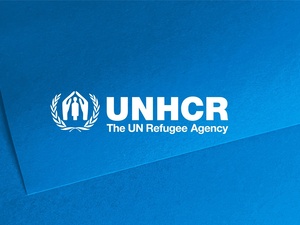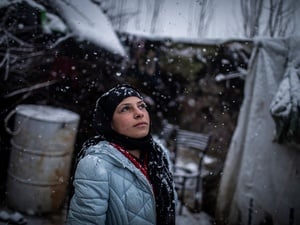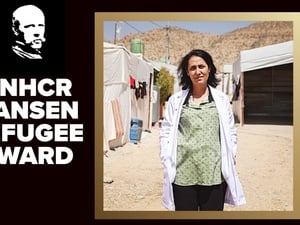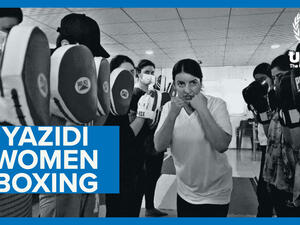Iraq: UNHCR's preliminary repatriation and reintegration plan
Iraq: UNHCR's preliminary repatriation and reintegration plan
You have probably seen reports quoting Iraqi refugees in various countries who are now anxious to go home, many of them after a decade or more in exile. Obviously, return and reintegration will be among the major challenges in post-conflict Iraq. Along with the rapid changes that are now taking place in Iraq, UNHCR is shifting its primary focus from contingency preparations for a possible refugee influx into neighbouring states to laying the groundwork for the eventual return of hundreds of thousands of Iraqi refugees. As part of that process, we have developed a preliminary repatriation and reintegration plan for up to 500,000 Iraqi refugees, out of an estimated 900,000 now in the immediate region and beyond.
So when the political climate is right and we see an environment that's conducive to voluntary return - and I should emphasise that we're a long way from that right now - UNHCR wants to be ready. At the same time, we still need to be prepared for any possible outflow from Iraq, where continuing insecurity and the fragile religious and ethnic tensions could yet result in new displacement. Thus, we will for the time being maintain our current levels of readiness in neighbouring countries. So far, we have committed less than $30 million to those preparations, primarily stockpiles and equipment that can eventually be used inside Iraq or elsewhere, as needed.
The budget for the preliminary repatriation and reintegration plan is $118 million over eight months, which means we're still basically working within the levels of our existing Iraq emergency budget of $154 million. You may recall that it had been designed to cover the possible needs of up to 600,000 refugees for six months. Our repatriation and reintegration work will be part of the overall UN humanitarian effort in Iraq under the UN Humanitarian Coordinator, with whom we'll maintain close co-ordination.
The preliminary repatriation and reintegration plan covers such sectors as shelter ($20 million); domestic needs ($18 million); protection, legal assistance and monitoring ($16.8 million); and transport and logistics for returnees ($15 million). It contains planning figures for numbers of possible returnees; identifies the benchmarks that need to be in place before organised returns begin; describes potential obstacles; and defines UNHCR's role under its international mandate to provide solutions for refugees.
Our planning figure of 500,000 possible returnees is based on several groups. Of the 212,000 Iraqi refugees living in neighbouring countries, mainly Iran (where there are 202,000), UNHCR estimates approximately 165,000 could eventually return home. Another 183,000 Iraqis live in industrialised countries, where most of them are well integrated and might be reluctant to go back to Iraq at this stage. Nevertheless, the UNHCR plan provides support for the possible return of about 35,000 of them. There are also some 84,000 Iraqi asylum seekers in various countries and the plan assumes about three-quarters of them - about 60,000 - will repatriate. Finally, there are approximately 450,000 Iraqis in refugee-like situations - mostly in Jordan and Syria - and our planning figure has 50 to 60 percent of them (or about 240,000) going home.
While there will undoubtedly be people returning before stability and security are in place, UNHCR will only support return when some basic principles are met. These benchmarks include the ability to provide for the physical, material and legal safety and well-being of the returnees. Their physical safety must be assured by the authorities in Iraq and includes an end to violence and insecurity and the establishment of operational law enforcement institutions. Material safety includes access to means of survival and basic services in the early phases of return - things like potable water, food and health services. Over the longer term, we need to see measures in place to ensure sustainable reintegration. Legal safety includes redress for human rights violations, non-discrimination and unhindered access to justice.
We would also want to ensure the voluntariness of returns in a safe and dignified manner; be able to meet the special protection needs of vulnerable persons; and ensure that UNHCR has unhindered access to returnees at all stages of the return process.
UNHCR's work would focus largely on its traditional protection and legal activities. Although the plan does not address the needs of internally displaced people, our experience in places like the Balkans teaches us that in situations of post-war recovery in ethnically diverse areas, many of the problems faced by returning refugees are also shared by IDPs. These range from extremely complicated property issues to the physical and legal protection of particularly vulnerable groups. In such cases, UNHCR has provided protection and assistance to both groups and could do the same in Iraq, where many refugees and internally displaced people originate from the same areas, were forced out of their homes for similar reasons and are likely to face similar problems upon return.
Finally, just a reminder that UNHCR is still asking governments to temporarily halt any forced returns of rejected Iraqi asylum seekers and provide appropriate complementary forms of protection to Iraqis in the interim. We're already preparing for repatriation, but as I mentioned, there's still a long ways to go before the necessary conditions are in place.







